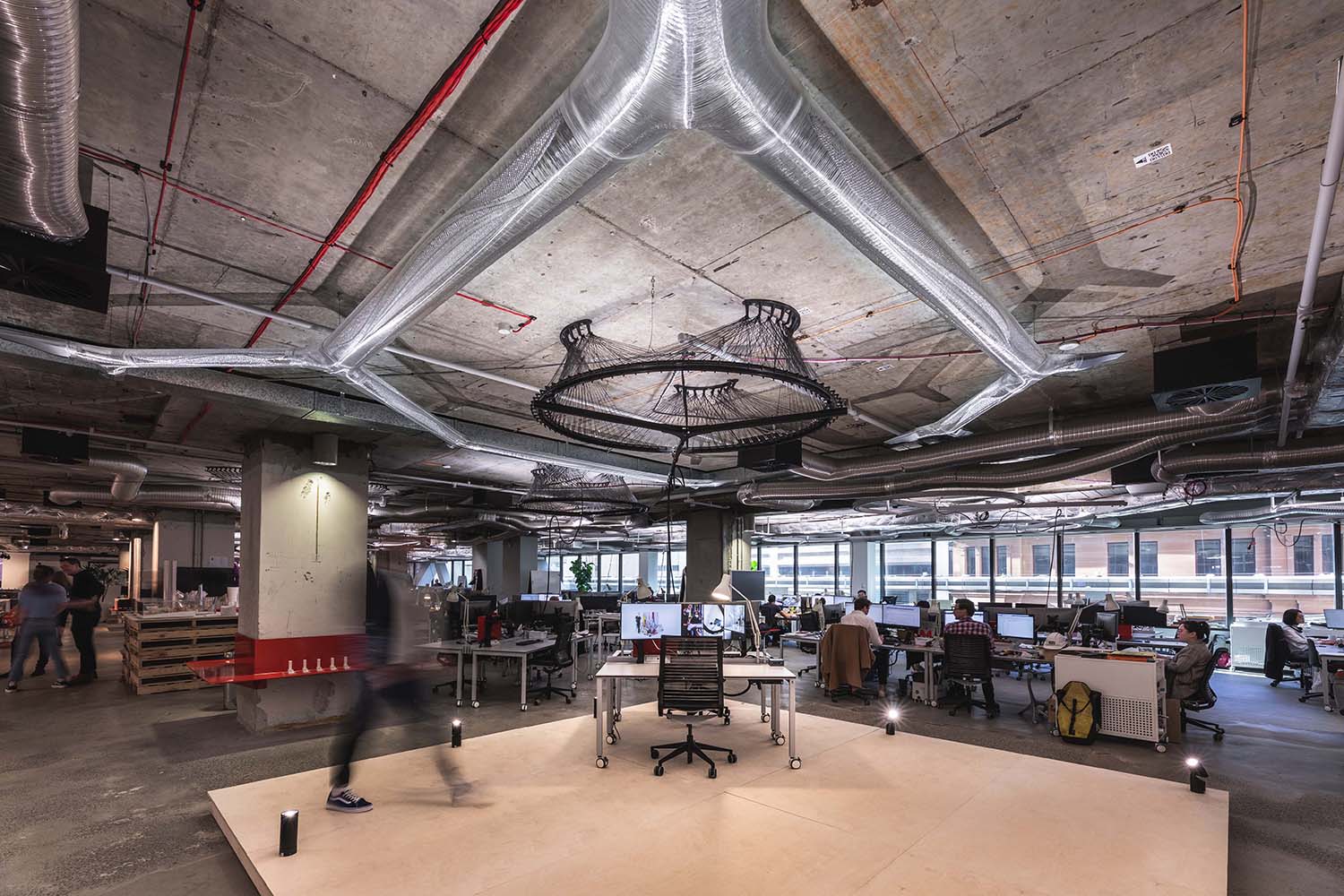SR2 – Systems Reef
BVN and the University of Technology Sydney (UTS)
SR2 is the world’s first 3D printed air distribution system. Developed from a research collaboration between BVN and the University of Technology Sydney, it is made from recycled waste plastic and designed for circularity.
In 1928, air conditioning systems revolutionised the way we occupy buildings. Since then, we have seen the development and evolution of many building technologies, but little attention has been paid to how we deliver air onto commercial floorplates. Despite the inherent inefficiencies of both the system and the product, steel ductwork technology has remained essentially unchanged for almost a century.
SR2 (patent pending) is a radical approach to how air is delivered in buildings – a new air distribution system designed to replace traditional steel tertiary air distribution systems in applications without suspended ceilings. It is designed to connect to standard VAV terminals, or similar, and combines the functionality of ductwork and diffuser into one cohesive product.
Consisting of 3D printed components and standardised connections, seals, and fixings, SR2 allows for a simple click and connect approach to existing and new HVAC systems. Air is diffused through pores integrated into the linear component, improving human comfort by creating a more even coverage of air. SR2 is also 3D printed using recycled PET-G plastic, a lightweight circular material sourced from waste products. The circular nature of PET-G allows components to be easily disassembled, crushed, re-extruded, and fed back into the material supply chain to create new products. Coupled with the use of waste plastic, SR2 reduces embodied carbon by 90 per cent when compared to conventional steel ductwork.
Photography by SR2 Design Team

